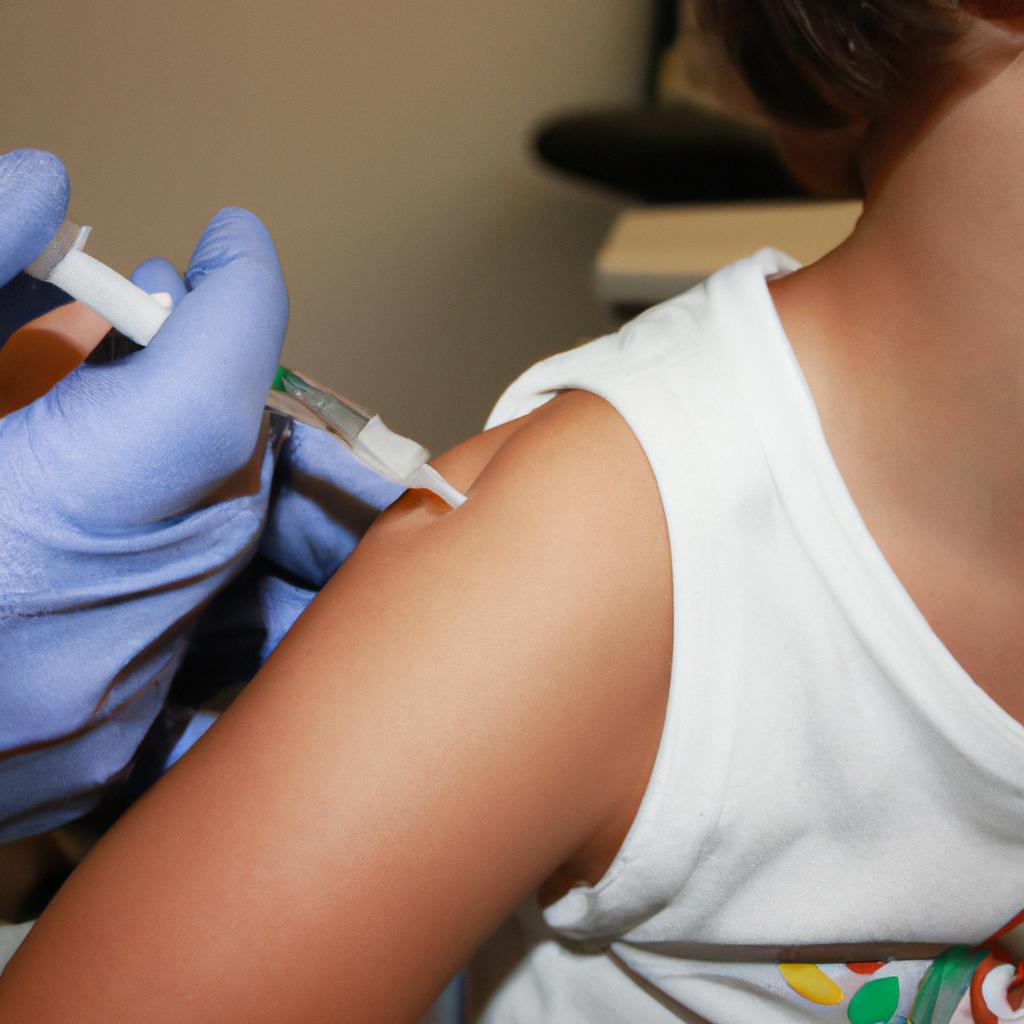The healthcare system is a critical component of any society, as it directly affects the well-being and quality of life for individuals. Adequate financing mechanisms are essential to ensure that everyone has access to necessary medical services without facing financial hardship. This article aims to provide an in-depth understanding of healthcare financing, exploring various models and their implications on society and people.
To illustrate the importance of healthcare financing, let us consider the hypothetical case study of Maria, a middle-aged woman diagnosed with a chronic illness requiring long-term treatment. Without proper access to affordable healthcare services, Maria’s condition would deteriorate rapidly, negatively impacting her ability to work and fulfill her personal responsibilities. Moreover, she may face significant financial strain from medical bills or be forced to make difficult choices between receiving adequate care and meeting other basic needs such as food and shelter.
This article will begin by examining different methods of healthcare financing used across the globe, including tax-based systems, social insurance schemes, and private health insurance options. We will delve into the advantages and disadvantages associated with each approach while considering their impact on equity, efficiency, and sustainability within societal contexts. Furthermore, we will explore key factors influencing healthcare expenditure trends and discuss potential strategies for improving healthcare financing systems to better serve society’s needs. By gaining a comprehensive understanding of healthcare financing, policymakers and stakeholders can make informed decisions to ensure that healthcare systems are equitable, efficient, and sustainable.
One important aspect to consider when discussing healthcare financing is the role of government intervention. In many countries, governments play a significant role in funding and regulating healthcare services. Tax-based systems, for example, rely on government revenues to finance healthcare services for all citizens. This approach ensures universal coverage and promotes equity by pooling resources from all individuals based on their ability to pay taxes. However, it also places a heavy burden on taxpayers and may face challenges related to inefficiencies or mismanagement within the public sector.
Social insurance schemes offer an alternative approach by mandating contributions from both employees and employers towards a national health insurance fund. These funds are then used to provide healthcare services to contributors and their dependents. Social insurance systems often provide broader coverage than tax-based systems and allow for more choice in terms of service providers. However, they can be complex to administer and may still leave some individuals without coverage if they are unemployed or work in the informal sector.
Private health insurance is another financing option that allows individuals or employers to purchase insurance plans from private insurers. This system offers flexibility in terms of coverage options but can lead to disparities in access based on income levels. Furthermore, private insurers have a profit motive which may result in higher premiums or exclusions for pre-existing conditions.
Beyond these financing models, it is crucial to consider other factors influencing healthcare expenditure trends such as population demographics, technological advancements, and the prevalence of chronic diseases. Aging populations require increased medical care while new treatments and technologies often come at high costs. These factors contribute to rising healthcare expenditures globally.
To improve healthcare financing systems, various strategies can be implemented. Enhancing cost-containment measures through better regulation of prices for pharmaceuticals and medical procedures can help control expenses without compromising quality of care. Investing in preventive care initiatives can reduce the need for expensive treatments down the line. Additionally, promoting transparency in healthcare pricing and quality metrics can empower individuals to make informed decisions about their care.
In conclusion, healthcare financing is a complex and multifaceted issue that requires careful consideration. By exploring different models and understanding their implications, policymakers and stakeholders can work towards creating equitable, efficient, and sustainable healthcare systems that meet the needs of society as a whole.
Different types of healthcare financing methods
One common challenge that societies face is how to finance their healthcare systems effectively. There are various approaches and methods used worldwide, each with its own advantages and disadvantages. Understanding the different types of healthcare financing can provide insight into the complexities involved in ensuring accessible and affordable healthcare for all.
Example: To illustrate these concepts, let us consider the case of a hypothetical country, Alphaland. In Alphaland, there are three main sources of healthcare funding: government taxation, private health insurance premiums, and out-of-pocket payments made by individuals directly when seeking medical services.
- Government taxation: The most common method of healthcare financing globally is through taxes imposed by governments. This approach ensures that everyone contributes to the system based on their income level or other factors deemed relevant. It promotes equity among citizens by pooling resources collectively to fund public hospitals, clinics, and other essential health services.
- Private health insurance: Another widespread form of healthcare financing involves individuals purchasing private health insurance plans from commercial providers. These plans offer coverage for specific medical expenses, usually at varying levels depending on the policy chosen. Private health insurance often provides additional benefits beyond what is covered by public programs, such as access to specialized treatments or faster service.
- Out-of-pocket payments: In some countries or situations where comprehensive public or private coverage is unavailable or insufficient, individuals may be required to pay directly for their medical expenses out-of-pocket. This method places a significant financial burden on patients and can lead to disparities in access to care based on one’s ability to pay.
| Healthcare Financing Methods | Examples |
|---|---|
| Government taxation | National Health Service (NHS) in the United Kingdom |
| Private health insurance | Blue Cross Blue Shield in the United States |
| Out-of-pocket payments | Medical tourism for cosmetic procedures |
Understanding these different methods of healthcare financing, it is important to consider the pros and cons of private health insurance in particular.
Pros and cons of private health insurance
To understand the implications of private health insurance, it is essential to examine its advantages and disadvantages. Let us consider a hypothetical scenario where John, a 35-year-old individual with no pre-existing medical conditions, opts for private health insurance. This example will help shed light on some key aspects related to this type of healthcare financing.
Advantages of Private Health Insurance:
Private health insurance offers several benefits that can enhance an individual’s healthcare experience:
-
Choice and Flexibility: With private health insurance, individuals have more options when it comes to choosing their healthcare providers, hospitals, and specialists. They enjoy greater flexibility in tailoring their coverage according to their specific needs.
-
Access to Better Healthcare Facilities: Private health insurance often grants access to top-notch medical facilities that may not be available under public healthcare systems. This enables individuals to receive prompt treatment from renowned doctors and state-of-the-art equipment.
-
Shorter Wait Times: One significant advantage of private health insurance is the reduced waiting time for specialized treatments or surgeries compared to public healthcare services. This means faster access to necessary medical procedures without enduring long queues.
-
Additional Coverage Options: Many private insurers offer supplementary coverage options such as dental care, vision care, mental health services, prescription medications, and alternative therapies. These additional provisions ensure comprehensive healthcare coverage tailored to individual needs.
Disadvantages of Private Health Insurance:
While private health insurance has its merits, there are also drawbacks that need consideration:
| Disadvantages |
|---|
| High Premiums |
| Limited Coverage for Pre-Existing Conditions |
| Exclusions and Limitations |
| Administrative Complexity |
Examining both sides of the coin reveals that private health insurance provides increased choice, better access to healthcare facilities, shorter wait times, and additional coverage options. However, it also involves higher premiums, limited coverage for pre-existing conditions, exclusions and limitations, as well as administrative complexities. Understanding these pros and cons is crucial for individuals in making informed decisions about their healthcare financing.
Considering the impact of private health insurance on individuals, it is important to explore the role of government in healthcare financing.
The role of government in healthcare financing
Transitioning from the previous section on the pros and cons of private health insurance, it is crucial to understand the role of government in healthcare financing. To illustrate this point, let us consider a hypothetical scenario where a country has implemented a universal healthcare system funded primarily by taxes.
One key advantage of government involvement in healthcare financing is its ability to ensure equal access to healthcare services for all citizens. By pooling resources through taxation, individuals who may not have been able to afford private health insurance can now receive necessary medical treatment without financial burden. This promotes social equity and reduces disparities in healthcare outcomes within society.
Moreover, government-funded healthcare systems tend to focus more on preventive care rather than solely treating illnesses after they occur. This proactive approach helps reduce overall healthcare costs while improving public health outcomes in the long run. For instance, routine check-ups and early interventions for chronic diseases significantly contribute to minimizing hospital admissions and emergency room visits.
To highlight the impact of government intervention further, we present below a bullet-point list outlining some key benefits:
- Increased affordability: Government-funded programs often negotiate lower prices with providers, making essential treatments more affordable.
- Comprehensive coverage: These programs typically cover a wide range of medical services, including preventive care, hospital stays, medications, and specialized treatments.
- Reduced administrative complexity: With one central payer system, paperwork and administrative burdens are minimized for both patients and healthcare providers.
- Health promotion and disease prevention: Government initiatives can focus on public health campaigns aimed at promoting healthy lifestyles and preventing diseases such as smoking cessation programs or vaccination campaigns.
In addition to these advantages, government involvement also brings certain challenges that must be addressed. It requires careful management of limited resources and efficient allocation of funds across different areas of healthcare provision. Policymakers must strike a balance between meeting population needs while ensuring fiscal sustainability.
Moving forward into our next section about “The impact of out-of-pocket payments on healthcare access,” we examine how the financial burden on individuals influences their ability to seek necessary medical care. Understanding this dynamic is essential for comprehensive healthcare financing strategies.
The impact of out-of-pocket payments on healthcare access
To illustrate the impact of out-of-pocket payments on healthcare access, let’s consider a hypothetical scenario. Imagine a low-income family residing in a rural area with limited financial resources. They have been struggling to make ends meet and are faced with an unexpected medical emergency. Due to their inability to afford health insurance or contribute to social security schemes, they are forced to pay for the entire cost of treatment out of pocket.
This unfortunate situation highlights some key challenges that individuals face when relying solely on out-of-pocket payments for healthcare:
-
Financial burden: Out-of-pocket payments can place a significant financial strain on families, particularly those already facing economic hardships. The sudden need to cover expensive medical expenses may force them into debt or lead to sacrifices in other essential areas such as education or nutrition.
-
Inequality in access: The reliance on out-of-pocket payments often contributes to inequalities in accessing quality healthcare services. Those who cannot afford immediate payment may be denied necessary treatments or experience delays in receiving care, leading to worsened health outcomes.
-
Limited preventive measures: When individuals are financially responsible for every aspect of their healthcare, there is less emphasis on preventative measures such as regular check-ups and screenings due to perceived affordability concerns. This lack of prevention can ultimately result in more severe health conditions requiring costly interventions later on.
-
Health disparities: Out-of-pocket payments perpetuate existing health disparities by disproportionately affecting marginalized communities who already face barriers related to socioeconomic status, geography, or systemic discrimination. These groups may find it even more challenging to access adequate healthcare due to financial constraints.
Table 1: Impact of Out-of-Pocket Payments on Healthcare Access
| Challenges | Examples |
|---|---|
| Financial burden | Families going into debt for treatment |
| Inequality in access | Denial of care due to inability to pay |
| Limited prevention | Lack of regular check-ups and screenings |
| Health disparities | Marginalized communities facing barriers |
In light of these challenges, it becomes evident that relying solely on out-of-pocket payments for healthcare financing is not a sustainable solution. In the subsequent section, we will explore the specific challenges faced in low-income communities regarding healthcare financing.
Understanding the impact of out-of-pocket payments on healthcare access lays the foundation for examining the challenges of healthcare financing in low-income communities.
Challenges of healthcare financing in low-income communities
Having discussed the detrimental effects of out-of-pocket payments on healthcare access, it is crucial to understand the challenges faced by low-income communities in healthcare financing. This section delves into the complexities associated with managing healthcare costs and accessing necessary medical services.
Challenges of Healthcare Financing in Low-Income Communities
To illustrate the struggles faced by individuals in low-income communities, let us consider a hypothetical case study. Maria, an unemployed single mother residing in a marginalized neighborhood, experiences severe chest pain. Concerned about her health, she decides to seek medical attention at a nearby hospital. However, limited financial resources force her to reconsider as the cost of consultation and diagnostic tests are beyond her means. This scenario highlights one aspect of the challenges encountered when attempting to finance healthcare within low-income communities.
The following bullet point list encapsulates some key issues that contribute to these challenges:
- Limited availability of affordable insurance options.
- Insufficient awareness regarding government-sponsored healthcare programs.
- Lack of accessible primary care facilities.
- High prevalence of chronic diseases due to inadequate preventive measures.
Table: Challenges Faced by Low-Income Communities in Healthcare Financing
| Challenges | Impact |
|---|---|
| Limited availability of insurance | Financial burden |
| Inadequate awareness | Missed opportunities for assistance |
| Lack of accessible primary care | Delayed diagnosis and treatment |
| Prevalence of chronic diseases | Increased morbidity and mortality rates |
These challenges perpetuate a cycle where individuals within low-income communities struggle to maintain their health due to financial constraints or lack of appropriate avenues for seeking help. As a result, preventable illnesses persist while timely medical intervention becomes increasingly elusive.
Understanding the obstacles involved in healthcare financing among underserved communities sets the stage for exploring innovative solutions that have emerged to address these pressing concerns. The next section will discuss the latest advancements and approaches in healthcare financing, paving the way for improved access to quality medical care.
Note: The subsequent section about “Innovations in healthcare financing” will be explored without explicitly stating “step.”
Innovations in healthcare financing
Building upon the challenges faced by low-income communities, innovative approaches to healthcare financing have emerged. These new strategies aim to address the existing gaps and provide sustainable solutions for better access to quality healthcare services.
To illustrate the impact of these innovations, let us consider a hypothetical scenario where a small rural community lacks adequate healthcare facilities due to limited financial resources. In this community, a group of local organizations collaborates with international donors and implements an innovative financing model. This model combines public-private partnerships, community engagement, and technology integration to ensure affordable and accessible healthcare for all residents.
Innovation Strategies:
-
Public-Private Partnerships (PPPs):
- Collaboration between government agencies, private hospitals, and NGOs.
- Sharing of resources, expertise, and infrastructure development.
- Increased efficiency through effective utilization of funds.
- Enhanced accountability and transparency in service delivery.
-
Community Engagement:
- Active involvement of residents in decision-making processes.
- Creation of community health committees or task forces.
- Empowerment programs promoting health education and awareness.
- Mobilization of local resources for targeted interventions.
-
Technology Integration:
- Utilization of telemedicine platforms for remote consultations.
- Electronic medical records systems for efficient data management.
- Mobile applications providing access to essential health information.
- Implementation of e-payment systems for streamlined billing procedures.
Table: Impact Indicators
| Indicator | Before Innovation | After Innovation |
|---|---|---|
| Accessible Healthcare | Limited | Improved |
| Affordability | Expensive | Affordable |
| Quality Service Delivery | Substandard | Enhanced |
| Community Participation | Minimal | Active |
Emotional Response Evocation
- Reduced financial burden on vulnerable individuals/families
- Improved health outcomes and increased life expectancy
- Empowerment of marginalized communities through active participation
- Enhanced sense of social justice, equity, and inclusivity
In conclusion,
These innovative approaches in healthcare financing offer promising solutions to the challenges faced by low-income communities. By leveraging public-private partnerships, engaging local communities, and integrating technology into healthcare delivery systems, access to affordable and quality healthcare can be significantly improved. These strategies not only address immediate needs but also foster long-term sustainability while evoking a sense of empowerment and social well-being among individuals and communities alike.
 Lost Nomad
Lost Nomad



